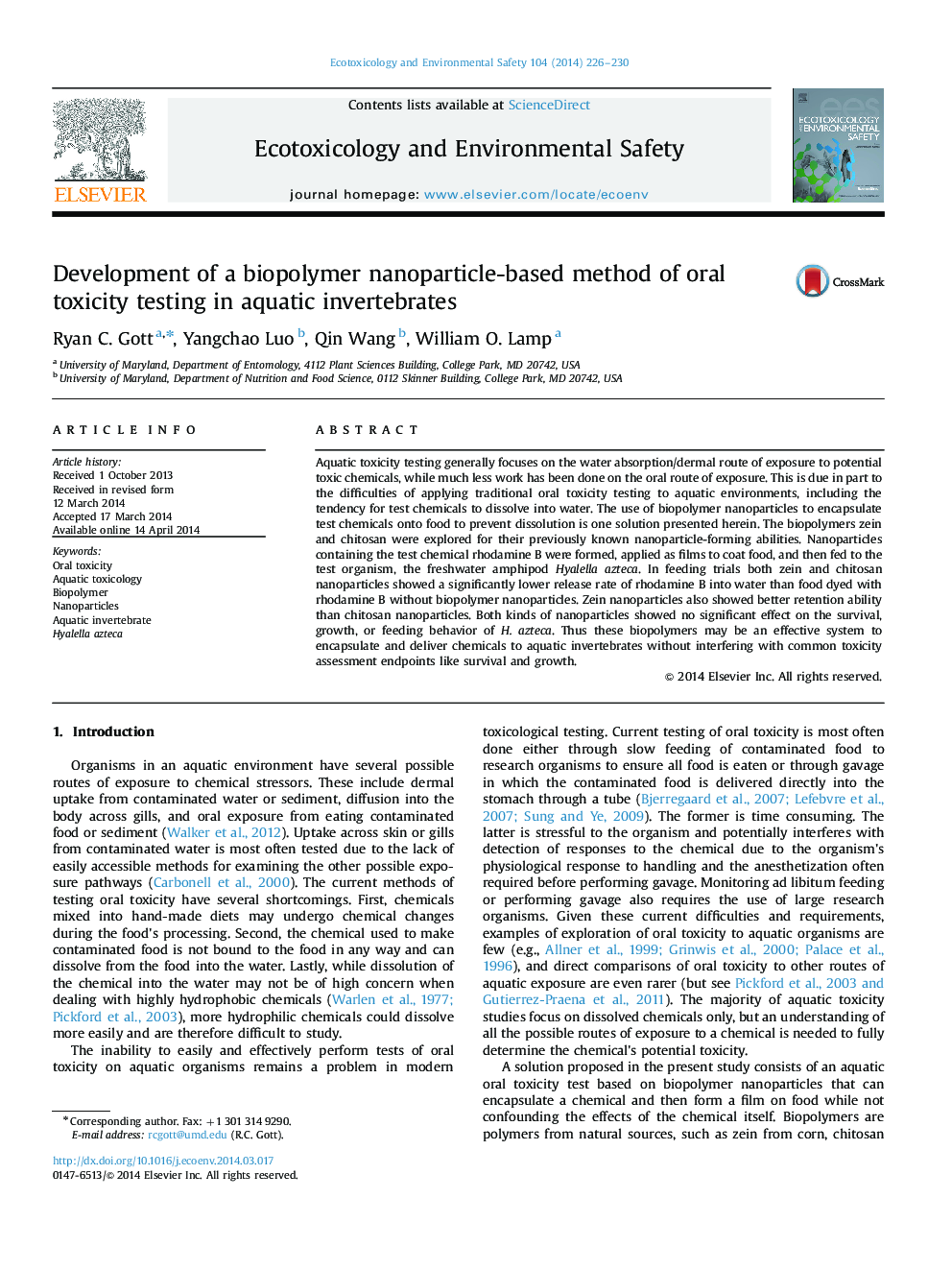| Article ID | Journal | Published Year | Pages | File Type |
|---|---|---|---|---|
| 4420177 | Ecotoxicology and Environmental Safety | 2014 | 5 Pages |
•A system for testing oral toxicity using biopolymer nanoparticles was developed.•Biopolymer nanoparticles retained encapsulated chemical when in water.•Nanoparticles did not affect survival, growth, or behavior of amphipods.
Aquatic toxicity testing generally focuses on the water absorption/dermal route of exposure to potential toxic chemicals, while much less work has been done on the oral route of exposure. This is due in part to the difficulties of applying traditional oral toxicity testing to aquatic environments, including the tendency for test chemicals to dissolve into water. The use of biopolymer nanoparticles to encapsulate test chemicals onto food to prevent dissolution is one solution presented herein. The biopolymers zein and chitosan were explored for their previously known nanoparticle-forming abilities. Nanoparticles containing the test chemical rhodamine B were formed, applied as films to coat food, and then fed to the test organism, the freshwater amphipod Hyalella azteca. In feeding trials both zein and chitosan nanoparticles showed a significantly lower release rate of rhodamine B into water than food dyed with rhodamine B without biopolymer nanoparticles. Zein nanoparticles also showed better retention ability than chitosan nanoparticles. Both kinds of nanoparticles showed no significant effect on the survival, growth, or feeding behavior of H. azteca. Thus these biopolymers may be an effective system to encapsulate and deliver chemicals to aquatic invertebrates without interfering with common toxicity assessment endpoints like survival and growth.
